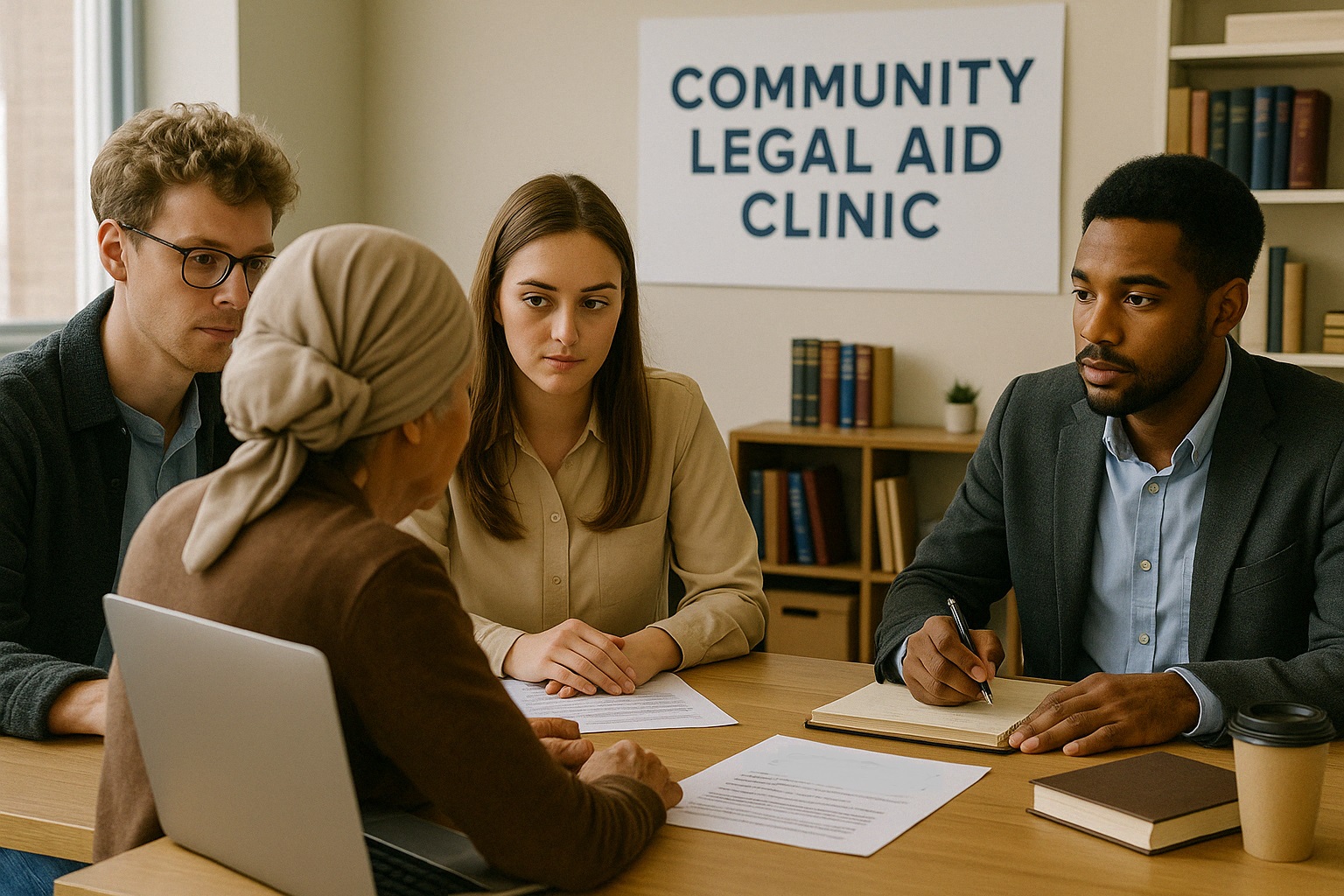
Partner with Law Schools for Aid Clinics
Access to legal help can change lives—but many people still go without it. For communities facing eviction, wage theft, immigration issues, or custody battles, the law can feel out of reach. Legal aid clinics offer a path forward, and partnerships between nonprofit groups and law schools can make these services stronger, more sustainable, and more impactful.
When law schools and legal aid organizations join forces, everyone benefits. Clients get real help. Students gain hands-on experience. Communities build trust in the legal system. These clinics aren’t just training grounds for future lawyers—they’re active spaces for justice, right now.
Why Law School Partnerships Help Communities and Students
Legal aid clinics run through law schools offer more than classroom theory. They connect students with real people facing serious legal issues. Under faculty supervision, students can assist with legal research, conduct client interviews, and help draft documents. Their work supports legal aid staff, lightens caseloads, and extends services to more people.
For students, this is a chance to learn by doing. It sharpens their skills and deepens their understanding of the law’s impact on everyday life. For communities, it means more access to services—especially in areas where legal aid teams are stretched thin.
Partnering with a law school also brings energy and fresh perspectives. Students often arrive with curiosity, drive, and a desire to make a difference. Their contributions help fill resource gaps while reminding everyone why this work matters.
How to Build a Strong Partnership
A successful clinic starts with a shared purpose. Legal aid organizations and law schools need to agree on the clinic’s goals, the types of cases it will handle, and how the partnership will be structured. That could mean setting a focus on housing, family law, immigration, or civil rights, depending on local needs.
Clear communication from the start helps things run smoothly. Both sides should know who is supervising, what hours students are expected to work, and how confidentiality and client follow-up will be handled. A written agreement or memorandum of understanding can help lay out these details.
Flexibility matters, too. Clinics should be designed to fit the academic calendar while still meeting client needs. That might mean structuring work in terms, offering year-round options, or building in training periods so students are ready to contribute effectively.
Let the Work Reflect the Community
No two communities have the same legal needs. A clinic in an urban area might focus on tenants’ rights or access to public benefits. A rural partnership might support farmworkers or low-income families dealing with family court.
The best clinics listen before they act. They take time to understand what local residents face and how services should be delivered. Community surveys, input from local leaders, or partnerships with grassroots organizations can help shape the clinic’s direction.
Being responsive also means offering services in ways that are accessible—whether that’s in multiple languages, in physical spaces people trust, or through flexible hours that fit people’s lives.
Support Students While They Serve
Students are still learning. They bring dedication, but they also need support. Supervision is key—not only to ensure quality service but also to help students grow into ethical, effective advocates.
Law school faculty, legal aid lawyers, or both can provide mentorship. Feedback, reflection, and opportunities to ask questions all help students improve their practice. The better supported they are, the better they can serve clients.
It’s also important to prepare students for the emotional side of legal aid. Many will be hearing tough stories for the first time. Creating a supportive environment helps prevent burnout and fosters long-term commitment to public interest law.
Keep Equity at the Center
Legal aid is about fairness. But equity also applies within the clinic itself. That means making sure the partnership doesn’t rely too heavily on unpaid labor, or treat student involvement as a replacement for qualified staff.
Students should support, not substitute. Legal aid organizations should continue to invest in professional staff and use clinics to expand capacity—not replace it.
When done thoughtfully, clinics can add real value without compromising the organization’s core work. They can also introduce students to the challenges faced by legal aid providers and inspire more to join the field after graduation.
Measure Impact and Share Results
Tracking how many clients are served, what kinds of cases are handled, and what students learn helps improve the clinic over time. It also gives partners information to share with funders, schools, and the public.
Regular reflection helps everyone stay connected to the goals. What worked well? What could be done differently next term? Are there gaps in service that could be addressed?
Celebrating wins—whether it’s a successful appeal or a thank-you note from a client—also builds morale and shows the value of the partnership to the broader community.
Long-Term Benefits of Law School Collaboration
These partnerships don’t just help in the short term. They build stronger systems for the future. Law students trained in legal aid clinics are more likely to understand the needs of underserved communities. Some will go on to careers in public interest law. Others will carry a lifelong respect for justice work into private practice, policymaking, or teaching.
And for the legal aid organizations, clinics can help build new pipelines of support. Today’s student volunteer may be tomorrow’s staff attorney, pro bono partner, or community ally.
By working together, law schools and legal aid organizations show what’s possible when education and service come together. These clinics aren’t just about learning—they’re about acting, helping, and showing up where it matters most.
